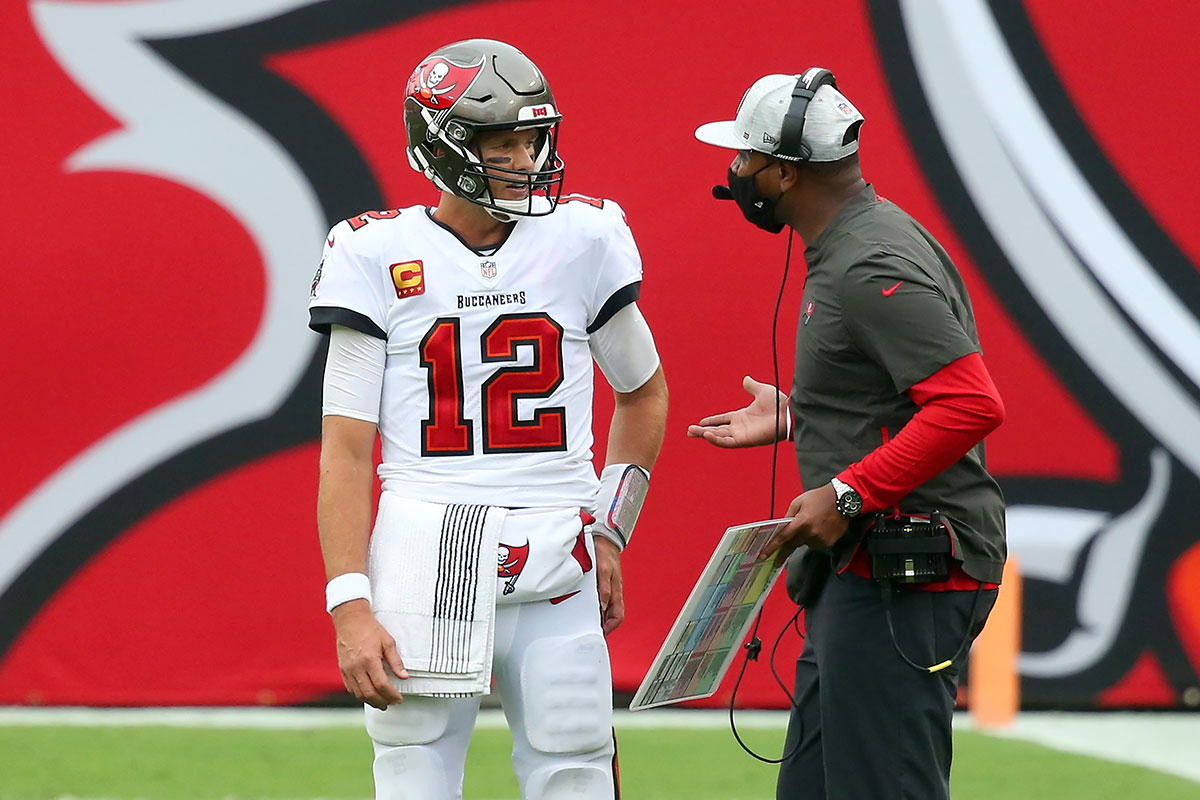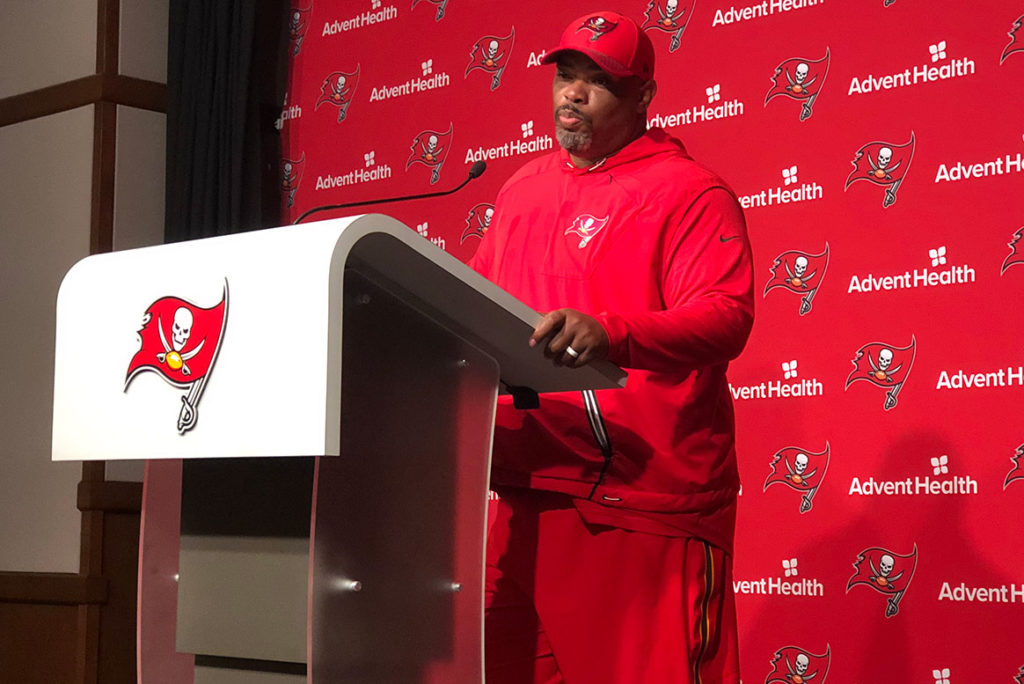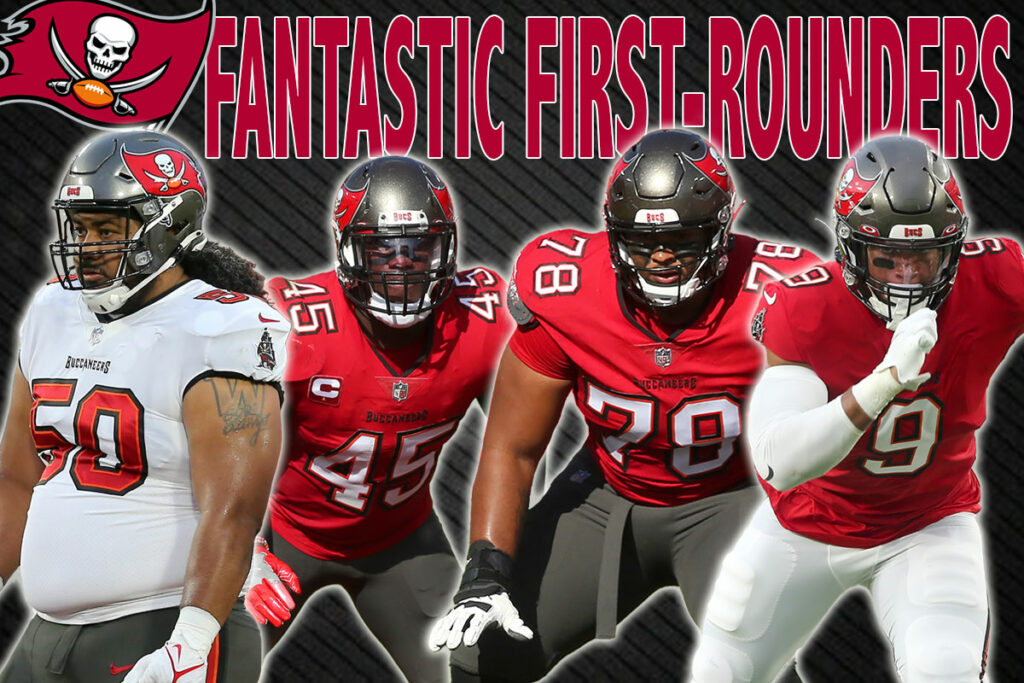The Tampa Bay Buccaneers offense will be excellent during the 2021 NFL season — as they were in 2020. However, the Bucs have a weakness: playing against MOFO (middle of the field open) coverages.
Bruce Arians’ ideal offensive game script would feature a strong run game that forces defenses to load the box, play single-high coverages and open up deep shots in the passing game. Per Sports Info Solutions, the Bucs passing attack devastated single-high coverages (Cover 1 man, Cover 3 zone), averaging 0.25 EPA/play (expected points added per play). This ranked 4th amongst all teams over the 2020 regular season and playoffs.
But when the Bucs faced 2-high coverages, the passing game was far less effective. Against Cover 2 zone, 2-man, Cover 4 (quarters), Cover 6 (quarter, quarter, half) and Tampa 2, the Bucs ranked 13th with 0.10 EPA/play.
Opponents played MOFO on 41% of the Bucs’ dropbacks in 2020. Given how well the Bucs offense has performed against MOFC (middle of the field closed), in addition to the league-wide trend of moving to more two-high coverages, this number will likely increase in 2021.
NFL Defensive Trends
Under defensive coordinator Brandon Staley, a disciple of Denver Broncos’ head coach Vic Fangio, the Los Angeles Rams led the 2-high safety boom last season. Regularly featuring 2-high shells and light boxes pre-snap, the Rams ranked second in pass defense efficiency. The most impressive part is that they managed to also rank second in rush defense efficiency. Aided by Aaron Donald, the Rams accomplished this by “stealing gaps”, or playing a gap-and-a-half.
Instead of having defensive linemen shoot their gaps, the Rams have them “muck up” the line so that linebackers and safeties can come down and help stop the running back. This is how they get away with having less than one player per gap in the box.
Essentially, the goal of the Rams’ defense was to schematically commit to stopping the pass and entice opponents to run. Given the massive discrepancy in overall league-wide passing and rushing efficiency, the strategy was sound even without a dominant run defense.
.@RamsNFL DC Brandon Staley using a similar scheme to Vic Fangio (spent 3 yrs together in DEN & CHI)
Rams & @Broncos – only teams to align pre-snap w/ 2-High safeties (Middle of Field Open) on 60+% of def snaps per @PFF & employ light boxes on 75+% of def snaps per @NextGenStats pic.twitter.com/ddYQQ1LZsv
— NFL Research (@NFLResearch) December 3, 2020
The Los Angeles Chargers named Staley their new head coach this offseason. In Green Bay, the Packers hired former Rams linebackers coach Joe Barry to be their new defensive coordinator. Further, even without Staley, the Rams will continue to operate with the same defensive philosophies. Lastly, Fangio’s Broncos will also continue to live in the two-high world.
Coaching changes alone should theoretically double the number of teams running the Fangio/Staley system. Given the success of their philosophies, teams without defensive coordinators from the Fangio/Staley tree will inevitably increase their two-high coverage usage as well.
Of course, few, if any, teams will match the Rams’ defensive success from last season. However, teams adopting those principles can still create issues for the Bucs.
2020 Buccaneers Against MOFO Coverages
The Chicago Bears and New Orleans Saints played more MOFO coverages on the Bucs’ pass plays than any other team. 57 percent of the Bucs’ dropbacks were against two-high safeties in the four total games against the Bears and the Saints. For reference, only 37 percent of Bucs’ dropbacks were against MOFO in their other 16 games.
Arians’ and Byron Leftwich’s counter to the Bears’ and Saints’ strategy was apparent — run the ball. In an effort to punish lighter boxes and entice opposing defenses to play single-high safety coverages, the Bucs’ ran the ball on 69 percent of neutral 1st downs. Neutral means plays were only included if they occurred while the game was competitive (win probability between 20 percent and 80 percent) and if there were more than two minutes remaining in the half.
In their other 16 games, the Buccaneers ran on 53 percent of neutral 1st downs. Overall, counting all games from the regular season through the playoffs, the Buccaneers ranked 23rd in the league with a 44 percent first down pass rate in neutral situations.
While the run-heavy strategy might sound reasonable in theory, it was highly ineffective in practice. For the entirety of the 2020 season, the Bucs only averaged 4.1 yards per carry, or -0.155 EPA/play, against defenses with six or fewer players in the box. Interestingly, against boxes of seven or more defenders, the Bucs still averaged 4.1 yards per carry, or -0.010 EPA/play. The EPA differences are a function of when the plays were called (e.g. gaining 1 yard on 3rd & inches is a +EPA result).
Even against defenses that are committed to playing light boxes, it’s unrealistic for most offenses to be consistently efficient enough on the ground to sustain elite offensive production and scoring. This is especially true against the Buccaneers, a team that is much better through the air than on the ground.
How The Bucs Can Beat 2-High Coverages
Unsurprisingly, the answer for the Buccaneers is in the pass game, not the run game. While they’re good enough on third down to overcome poor early down play-calling (see the 2020 NFC Championship Game), sustainable success will come from a varied early down attack.
Tom Brady led the league in both 2016 and 2017 in passing efficiency against MOFO (data from 2015 and earlier is not available). Those were not dink-and-dunk offenses. In fact, the 2017 Patriots ranked 4th in air yards per attempt. What made those offenses effective was their adaptability against different defenses.
Certain concepts are more effective against specific coverages, and the Sports Info Solutions Data Challenge aimed to quantify this. From observing the results found by Mark Schofield, Dr. Bud Davis, Keegan Abdoo, and Joey Ferraiola, the four most effective concepts against MOFO were: Scissors, Cab, Smash, and Dino.
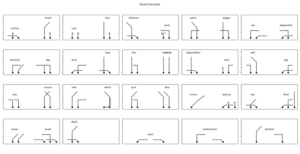
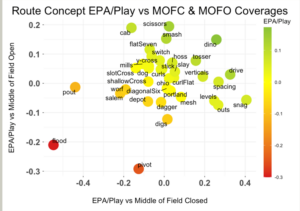
The Buccaneers called Scissors a couple of times in 2020. They also used Dino with some regularly. The Buccaneers called Smash, but they ran it differently with their “Okie” and “Smurf” concepts. From what I’ve seen, the Buc rarely use Cab, but they have some concepts that are functionally similar.
Scissors
— All-22 Clips (@tapetwentytwo) August 26, 2021
The Scissors concept pairs a post route from No. 1 (outside receiver) with a corner route from No. 2 (inside receiver). Against 2-high coverages, the goal is to create conflict for the play side safety. In the example above, the Packers are playing quarters. The strong side safety opens his hips to the corner route and leaves an open window for the post route.
Smash
— All-22 Clips (@tapetwentytwo) August 26, 2021
As mentioned, the Buccaneers tend not to use Smash in a conventional sense. Instead, they like using tight splits to pair a corner and out route. The quicker version of this is called “Okie”, and the deeper version is called “Smurf”. The goal is similar to Smash — create a high-low read. Instead of the low coming from a wideout hitch, it comes from a condensed split out route.
Dino
— All-22 Clips (@tapetwentytwo) August 26, 2021
Dino, or double post, is another way to create conflict for safeties. In the example above, the Buccaneers use a switch release with Scotty Miller and Mike Evans off the snap. As Miller gains width and depth, the play side safety opens towards the sideline to support against Miller. This leaves a one-on-one opportunity for Evans over the deep middle.
Play-Action
Another way the Bucs can increase their efficiency against MOFO is by increasing their play-action usage. In 2020, when facing 2-high coverages, only 15 percent of the Bucs’ passes were off of play-action. Yet, those passes yielded an astounding 0.332 EPA/play. By contrast, normal dropbacks against 2-high had an EPA/play of 0.058.
As teams trend toward playing lighter boxes, thus requiring more run support from their safeties, they also create new vulnerabilities.
This is a play that every team will copy with defenses transitioning to a 2 high/quarters-style philosophy. Bring the safeties down in the run game? Hard play action to make them jump up and then bombs away pic.twitter.com/wKeq1Oth7c
— Alex Rollins (@AlexRollinsNFL) August 25, 2021
If teams commit to taking away the deep ball by having four defensive backs deep (quarters) and are undeterred by the run game, the Bucs must expand their quick game. There will be openings in coverages underneath. Juke, jerk, and whip-type routes are excellent options from the No. 3 receiver spot (innermost receiver in trips) against two-high because the receiver will be one-on-one — in most instances against a linebacker.
The Bucs have too much offensive talent to fail, and the deep passing game will always be an integral part of Tampa Bay’s offense. However, opponents will undoubtedly do what they can to take that way, especially if it means facing an inefficient Bucs run game instead. As Tampa Bay faces more light boxes and 2-high coverages, it’s on Arians and Leftwich to be creative with their solutions through the air.

